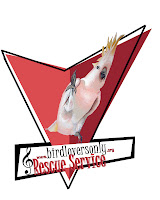Animal Talk Naturally will celebrate Christmas by supporting two nonprofit animal charities and an upcoming documentary film on the eternal lives of animals on their second annual Christmas show with twelve of their former and repeat guests! Each of the twelve special guests - who are each giving of their time and talent - will share their own unique message during the show, along with Christmas music provided by Jean Wenzel and Mary Buddemeyer-Porter. Irena Schulz, Snowball mom, will be one of the guests on "Season of Giving."
“We’ve had a lot of support from businesses stepping up to provide giveaways to anyone in our listening audience who donates $50 or more to at least one of the charities or the documentary film during the live two-hour show.” comments Dr. Jeannie Thomason, co-host of Animal Talk Naturally. “Each business that is participating will not only have their name and website mentioned on the show but, they are also receiving an entire year of advertising on
our Season of Giving page on Animal Talk Naturally’s Website http://www.animaltalknaturally.com/aseason-of-giving/ which will remain on the site until next year’s show!”
“We have also received tremendous support from two other radio shows - EFA Artists for Animals http://www.blogtalkradio.com/EFA and also Something About Women http://www.mykkim.com/default.asp?pid=13256 -a local NM radio show.” states Dr. Kim Bloomer, co-host of Animal Talk Naturally. “We are hoping that businesses will also donate directly to the charities or the documentary along with the live listening audience during the show. The more the better! The good news is that both charities are 501c3 non-profits so your donations are tax deductible. The documentary film is not a non-profit but whoever donates to "Animals In Paradise" will have their name listed in the credits and possibly your own piece of
video with your pet will be included in the film. Jesus was born into the world to give His life for us. The least we can do is give of our resources to help those less fortunate during this special time and season of giving.”
To find out more and how you can get involved go to http://www.animaltalknaturally.com/a-season-ofgiving/
Contact:
Dr. Jeannie Thomason
Animal Talk Naturally
http://www.animaltalknaturally.com/
Phone: 530.347.9211
Email: jeannie@animaltalknaturally.com
About Animal Talk Naturally:
Celebrating the art of natural animal health, the truth of animal nature and the love of the human/animal bond from a Christian faith-based focus. Veterinary naturopaths Dr. Kim Bloomer and Dr. Jeannie Thomason, now in their fourth year of online talk radio; bring in a wide variety of industry experts to help share the passion Animal Talk Naturally is known for by their audience. Join them bi-weekly for an often passionate, sometimes serious, sometimes funny, but never boring show! You and your animals can be “ears up” for the podcast at http://www.animaltalknaturally.com/























